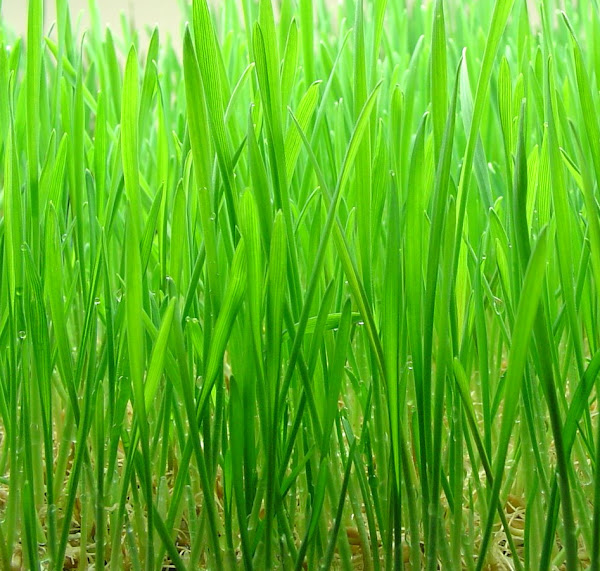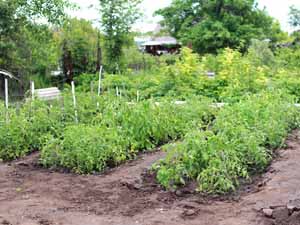Growing wheatgrass is very popular among the home gardeners and other people. And you actually don’t have to have a garden for growing wheatgrass. You can start indoor, even without soil.
Growing wheatgrass indoors is extremely easy and you can grow without prior experience.
Wheatgrass is actually the freshly sprouted first leaves of the common wheat plant. It is used as food, drink or dietary supplement.
Wheatgrass is served freeze dried or fresh, and so it differs from wheat malt (which is convectively dried). Wheatgrass is generally allowed to grow longer and taller than wheat malt.
Wheatgrass is very nutritious and good for human health. It contains chlorophyll, enzymes, amino acids, vitamins and minerals. It is also a good source of protein.
Wheatgrass juice is often available at juice bars. If you are among those people who loves wheatgrass juice, then why not growing wheatgrass of your own.
You can enjoy fresh and nutritious juice if you start organic wheatgrass farming in your garden of your own.
How to Grow Wheatgrass
Growing wheatgrass is extremely easy. You can grow both in home garden and indoor. But we will suggest you to grow indoors.
Because quality of the wheatgrass grown indoor is much better than wheatgrass grown outdoors.
It’s much easier to protect the quality of the plant in an indoor condition. However, here we are describing more information about growing wheatgrass.
Purchase Seeds
First of all, purchase a bag of good quality fresh seeds from market. Try to purchase organic seeds from a reputable source to ensure that the seeds have not been treated with pesticides or other medicines.

Soak the Seeds
Measure and rinse the seeds before soaking. Soaking is important for germinating the wheatgrass seeds, because soaking initiates germination (and by the end of the process, the seeds will have sprouted small roots).
Pour cold water into the bowl of seeds. Add about 3 times as much water as you have seeds.
Then cover the bowl with a lid or plastic wrap and place it about 10 hours or overnight.
After that drain the water from the seeds and replace it with more cold water and keep it for another 10 hours.
Repeat the process one more time for a total of 3 long soaks. By the end of the last soak, most of the seeds should have sprouted roots.
Prepare the Seed Tray
After soaking the seeds, prepare the seed tray for planting. Line the tray with paper towels for preventing the roots from growing through the holes in the bottom of the tray. Spread about 1 inch of layer of organic potting soil or organic compost in the seed tray.
Plant the Seeds
Spread the sprouted seeds in an even layer across the top of the potting soil or compost. Press the seeds into the soil lightly, but don’t bury them completely.
There are no problems if the seeds touch each other, but ensure there is not a pile of seeds in one area (because each seed needs a little room to grow).
Water the tray lightly after spreading the seeds, and ensure each seed gets a sprinkle. And then cover the tray with a few moisture sheets of newspapers for protecting the seedlings.
Water Continuously
Water the tray continuously and keep the seeds moist. It’s very important to keep the seeds moist and don’t let the seeds dry out in the first few days after you plant them. Use a spray bottle for watering the seed tray.
Remove the Newspaper
Remove the newspaper on the 4th or 5th day after planting the seeds. This will help to prevent the seedlings from sprouting under it. Continue watering the sprouted grass once a day.
Sunlight
Keep the sprouted new grass in partial sunlight. Direct sun will damage the grass. So ensure it is always in a shady place in your home.
Harvesting
The wheatgrass becomes ready for harvesting generally after 9-10 days of growth when they reach about 6 inches height.
A second blade of grass will begin growing out of the first shoot, once the shoots are mature. This is called ‘splitting’, and means that the grass is ready for harvesting.
For harvesting, cut the wheatgrass above the root. Use a scissors for harvesting the grass. And after harvesting, the wheatgrass can be kept in the refrigerator for about a week.
But the wheatgrass tastes best and provides the most health benefits if you consume it immediately after harvesting.
These are the common ways for growing wheatgrass. Hope you have enjoyed this guide! Good luck!






